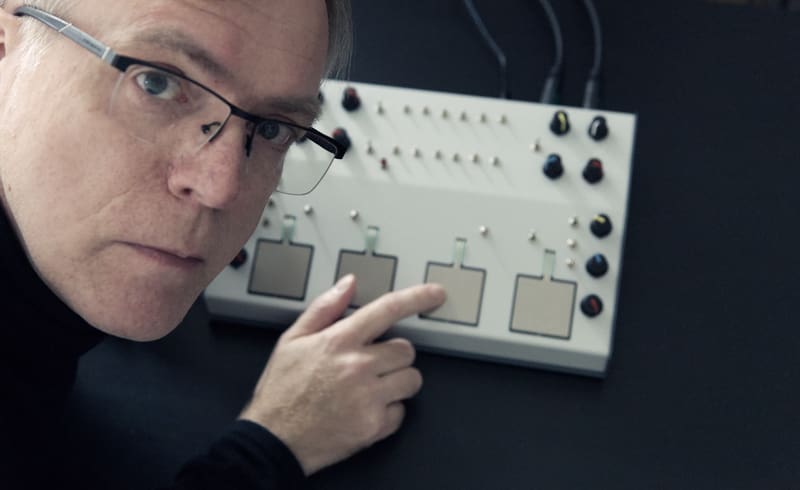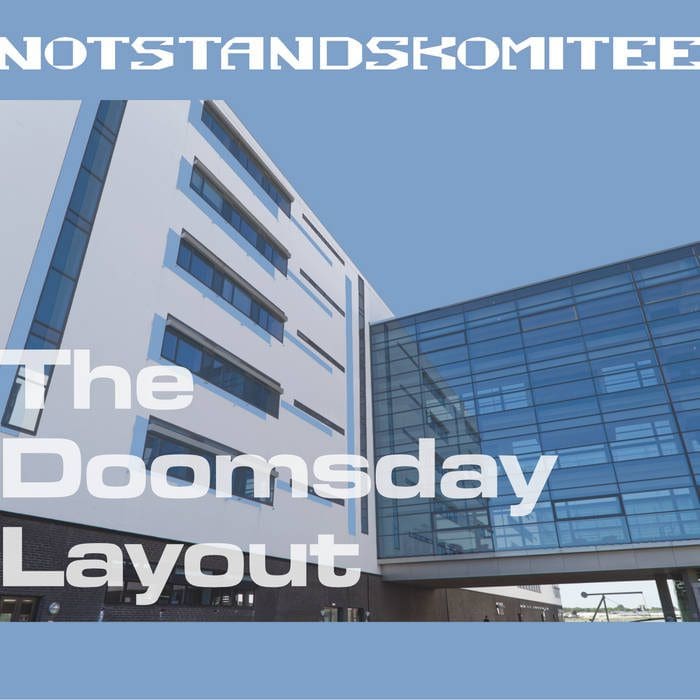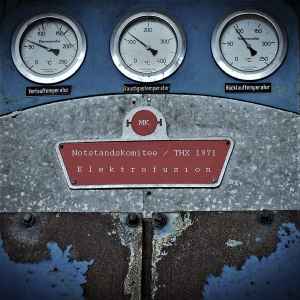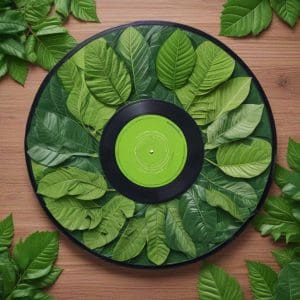Click interview with Notstandskomitee: ‘The idea was to paint with sound’


Click Interview with Notstandskomitee: ‘The Idea Was To Paint With Sound’
Notstandskomitee became a renowned project in the Electronic Underground scene of the 90s. Driven by Malte Steiner Notstandskomitee released several great tape recordings in the early 90s. Characterized by Electro-Minimalism and Experimental music the German project moved on releasing its first CD’s. Malte Steiner -who has been involved with numerous side-projects (Das Kombinat, Elektronengehirn, Akustikkoppler ao) released most of his works on his own label Block 4. The newest album entitled “The Doomsday Layout” is a fine selection of sixteen tracks that were originally composed between 2009 and 2023. The work sounds like Notstandskomitee at its best; great sound treatments, Minimal-Electronics, Experimental although accessible, sometimes Cinematic and even redefining Techno standards. Enough reasons to ask a few questions to this unique artist.
(Courtesy by Inferno Sound Diaries)
Q: You set up Notstandskomitee in 1991. What did you keep in mind from the early years and original spirit of the project? And what remains of it thirty years later?
Malte: Lot has changed during the decades but what remains is the playfulness and the will to experiment, to find new means of expression with the technology which was and is accessible to me. But not only using other companies products and their implementation of ideas of how to create music, it is important for me to invent and design my own instruments, software and hardware. It is a constant development.
Music industry is driven by nostalgia, but I rather reinvent myself instead of becoming a pale copy of the past me, repeating old songs and ideas. Important is to keep the excitement. The political aspect in my art always was and is there.
Q: I often experience your sound approach as the work of a ‘sound architect’ instead of a true ‘musician’. How do you perceive yourself and do you feel closer with one or the other?
Malte: I guess I am more on the side of sound architect, being never that much interested in the reproduction of traditional Western music styles. My departure point is the visual arts. When I started with Electronic music in my very young years around 1983, the idea was to paint with sound. Instead of combining chord progressions I started with composing fragments of recorded sounds, basically what Musique Concrète is doing since the 40s.
Q: You recently released the new album “The Doomsday Layout” featuring tracks written in between 2009 and 2023. What is the album all about and tell us a bit more about the selection of tracks?
Malte: After the album “Automatenmusik” in 2001 I became a bit disillusioned about the future of the music industry and concentrated on other projects like Elektronengehirn and my exhibitions. But I kept making tracks which qualified as Industrial / IDM Notstandskomitee music and so I have now a backlog with more than 100 tracks, quite a pool to pick from and compile an album!
The current theme is the rising instability of the world. The world was on the edge already in the 80s, but now it is literally falling apart. Everything is out of balance. I work on ways to express that, also in my visual art, without falling in cliches.
Q: Talking about sound and song writing I would like to get more information about your way of working? What are the different stages you’d to go through in song writing and -production?
Malte: Like many artists I like to start new things and keep the tracks in the editing stage, I guess I need more discipline. Sometimes it is good to come back to a piece after a year and suddenly discover what was missing, the songs ripe over the time. There is no big distinction between the composing and the mixing stage, especially after 2018 when I went totally ‘In-The-Box’ for the mixing. Before it was very time consuming to recall manually an older mix on the mixing desk to continue the work which also caused some frustrations, maybe the reason for the 10 year gap between releases. Now I have the backlog portable with me when I am on the road and can continue to work on them everywhere in the world. Often during mixing it becomes clear if there is enough going on or something missing, or even if there is too much. Equalization and compression can bring out details which I overheard before so that step is important for composition.
Decoupled is the final mastering step, to create a consistent album. That is usually done in one go without big gaps. I know that it is a good idea to let others with fresh ears master the album, but I don’t have the money for it and also don’t trust others to make the right decisions for my weird music.
Q: Several tracks of the album caught my attention but one in particular; so what did you try to express with “Watch People Reacting To Music By Notstandskomitee”? Your music remains instrumental so I was wondering what you try to express by the titles?
Malte: Often they are critical, sometimes humorous or just plain cynical. A while ago, last year I think, there was a -hopefully- short lived trend on video providers like Youtube, TicToc etc, with people filming people reacting to something, a piece of music or a movie. So the artistic product lost focus and it became more important how people react on something. I really think humankind is doomed…
Q: In a recent Akustikkoppler-interview you said about Notstandskomitee that ‘it’s difficult to decide to finish a track and let loose.’ What makes it that difficult and how do you look back at ‘older’ songs and albums today?
Malte: The center of production is the hard disk (or to be more precise, SSD) and an artist can edit and manipulate a song, picture, text or video digitally endlessly, without loss of quality. That is a big thing when you come from other times where that was not possible in that quality, every edit step added artefacts like noise. In those old days, let’s say before and around year 2000, you had you commit your mix to tape or DAT. It felt more done because revising it involved to switch and fade all devices again to the correct programs and settings. Now everything is easy to recall and revise, or to go back to an older version, branch out for a remix etc, it never stops and ideas keep flowing. What happens if I change this or that, is that sound correct, how is the timing? This can go on forever, so some kind of discipline is necessary.
Like many artists I would love to redo old albums, there is always something to correct. But that would take out the charm of that times and kill the vibe. When I find time for a re-release, and the goal is to make and keep everything available, I gently remaster the recordings, hopefully without changing too much. Especially with compression / limiter less is more, usually remasters of other artists albums in the last years are unlistenable to me, everything is driven against the wall.
Q: Any new plans/releases in the pipeline for Notstandskomitee and your side-projects?
Malte: Last month I finished a collaboration with Kim Holm from Aarhus (DK) and now I work on the Notstandskomitee live-setup. It is a constant development but I hope to create a technical platform for concerts, which I can keep a while and continue to add to it. Notstandskomitee concerts are usually audiovisual and follow my vision of the ‘Gesamtkunstwerk’. The music data, sequenced and played, controls the visuals which are generated in real-time with custom software I develop in the moment.
There is a new Elektronengehirn-album in the works which will be a CD, but also an vinyl album will be soon ready from TMS, the noise project I run with the artist Tina Mariane Krogh Madsen. We just released her experimental Noise CD “Compounds”. Our label block 4 is expanding, we found exciting artists for example in Helsinki which we going to release.
Since you’re here …
… we have a small favour to ask. More people are reading Side-Line Magazine than ever but advertising revenues across the media are falling fast. Unlike many news organisations, we haven’t put up a paywall – we want to keep our journalism as open as we can - and we refuse to add annoying advertising. So you can see why we need to ask for your help.
Side-Line’s independent journalism takes a lot of time, money and hard work to produce. But we do it because we want to push the artists we like and who are equally fighting to survive.
If everyone who reads our reporting, who likes it, helps fund it, our future would be much more secure. For as little as 5 US$, you can support Side-Line Magazine – and it only takes a minute. Thank you.
The donations are safely powered by Paypal.










